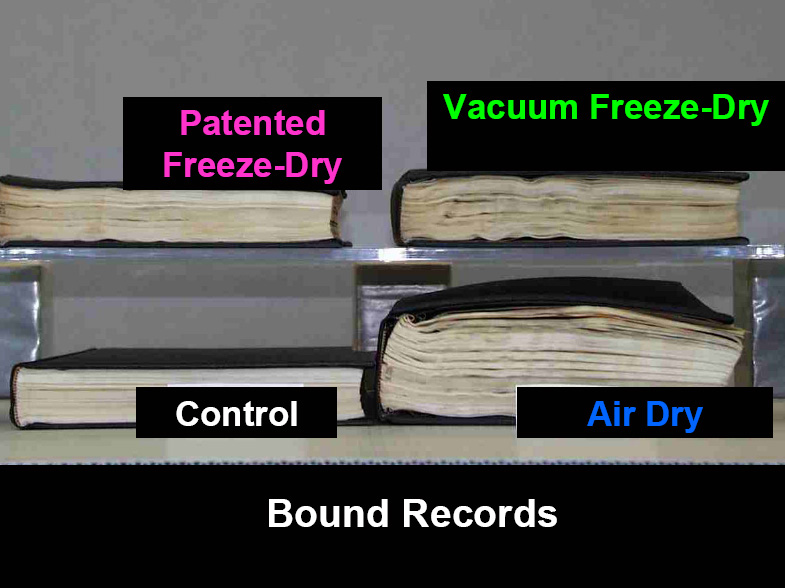
Comparison of Drying Methods
Bound volumes behaved much like unrestrained loose pages when dried. The patented freeze-dry process produced results most like the control. In general, if volumes are misshapen when packed for freeze-drying, they remain in that shape when dry. The patented vacuum freeze-dry process is specifically designed to press volumes back into shape through a compression system in its drying cycle, thus reducing the need for rebinding; volumes fit back on the shelves as they once were.
The patented process developers have also introduced a Rare Book Drying method in which a text-block is dried without desiccating its leather covers, diminishing the likelihood of broken hinges and need for subsequent repair. This approach is, however, more than 4 times the cost of traditional vacuum freeze drying. ($250 per cubic foot)
Not all books readily opened flat once dried. Both vacuum-freeze-dried samples felt stiff and were resistant to opening flat.

